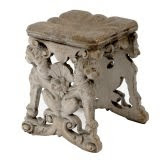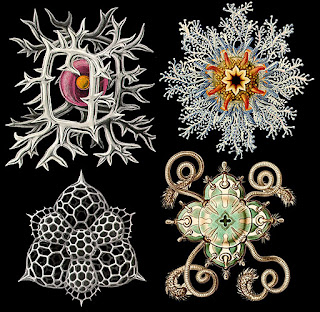Dalvabrothers photo
Decorative artists take ordinary objects and elevate them into works of beauty. This baroque footstool is a fabulous example of what ornate decoration can produce.As cultures evolved, the desire to decorate their daily lives also evolved. The elite and courts commissioned artists to transform their worlds with ornate interpretations of common objects.
Dalvabrothers photo
Decorative footstools amaze me. This is a rare set of four stools, the first photo is a detail shot of one of them. They are Italian circa 1700 and have their original crimson velvet with silver applique' on them. They may be purchased here.Not as comfortable, but just as beautiful is this stone carved stool.
Simpler in design, this neoclassical footstool has lion heads at each corner.
objectsplus photo
This neoclassical tabouret( a stool without a back or arms) is partial gilt italian 18th c. I love the shade of blue against the gilt flowers. You may purchase it hereTara Bradford photo
Blogger Tara Bradford featured this stool in her blog.
Italian artist Pelagio Pelagi worked for noblemen and kings creating mostly paintings but also worked with sculpture and decorative furniture. Look at those fabulous cabriole legs and winged angels! I am now on the look out for a fabulous tabouret!





























































































